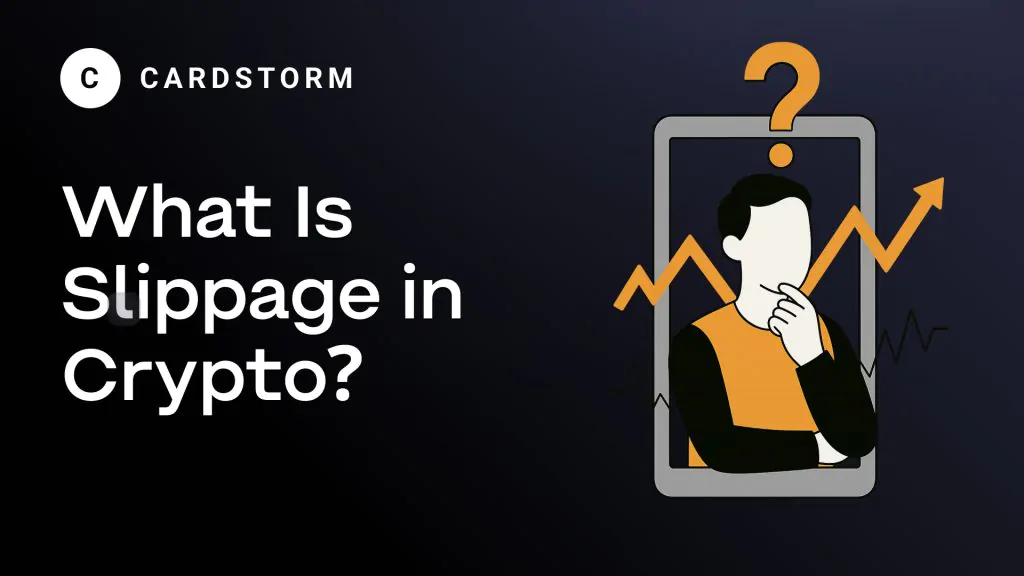What Is Slippage in Crypto?
Updated: May 20, 2025

If you’ve ever traded crypto or tried using it for a purchase — and ended up paying more than expected — you’ve experienced slippage. This common, but often misunderstood phenomenon plays a major role in both trading and spending cryptocurrency.
This article explains what slippage is in crypto, why it occurs, how it affects your transactions, and how to reduce its impact — especially when making real-world purchases with platforms like Cardstorm.
Understanding Slippage in Crypto Trading
Slippage happens when the price you expect for a trade doesn’t match the price you actually get. In crypto, prices move fast — especially with low-liquidity tokens or during periods of heavy trading.
Imagine placing a Bitcoin buy order at $100,000. If your transaction confirms at $100,300 instead, you’ve lost $300 to slippage.
Sometimes slippage works in your favor, and you pay less than expected. But most of the time, it eats into your funds — especially during volatile market swings or slow transaction times.
Types of Slippage in Crypto Trading
There are two main types of slippage in crypto:
1. Price Slippage
This type occurs when the market price changes during the execution of an order. Imagine placing a buy order for ETH at $2,000, only to have it filled at $2,050 — that’s price slippage.
2. Liquidity Slippage
Liquidity issues create this kind of slippage. If your order size exceeds available volume at a specific price level, the system fulfills parts of it at less favorable prices.
Key Causes of Slippage in Crypto Markets
Slippage in crypto is mainly driven by three factors:
- Market Volatility: Crypto prices can move fast, especially after big announcements or market shifts.
- Order Size: Large trades may not be filled at one price, causing price drift as the order is matched across multiple levels.
- Low Liquidity: In thinly traded markets, there aren’t enough buyers or sellers at a given price, so trades are filled at the next available level.
How to Minimize Slippage
While slippage can’t always be avoided, here are proven ways to reduce its impact:
- Use Limit Orders
A limit order ensures your trade only executes at your chosen price or better — no surprises. - Avoid Market Orders in Volatile Times
Market orders fill instantly at the best available price, but in volatile markets, that price can swing dramatically. - Trade During High-Volume Hours
When liquidity is high, there’s more activity and tighter spreads, which helps reduce slippage. - Avoid Trading Around Major News
Big headlines cause big moves. Try to avoid trading during breaking news or unexpected market events.
Why Slippage Matters — Especially for Spending

Slippage doesn’t just affect traders — it affects anyone using crypto to buy real-world goods. On many platforms, price movement between checkout and payment confirmation can lead to failed transactions or unexpected costs.
That’s where Cardstorm stands out:
At Cardstorm.io, you lock in your rate at checkout when you buy a gift card with crypto — and we protect your purchase from small price drops as you complete the payment.
✅ Avoid failed payments
✅ Skip re-checkouts
✅ Shop stress-free in volatile markets
Spend your crypto with confidence, even in a volatile market.
Understanding what slippage is in crypto helps you make smarter decisions — whether you’re trading, swapping, or spending. By recognizing what causes it and taking simple steps to manage it, you can protect your assets and avoid unnecessary losses.
And when it comes to real-world purchases, choose platforms like Cardstorm that eliminate slippage risk entirely — so you can spend your crypto with confidence.
